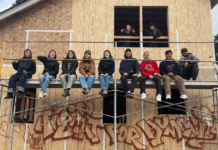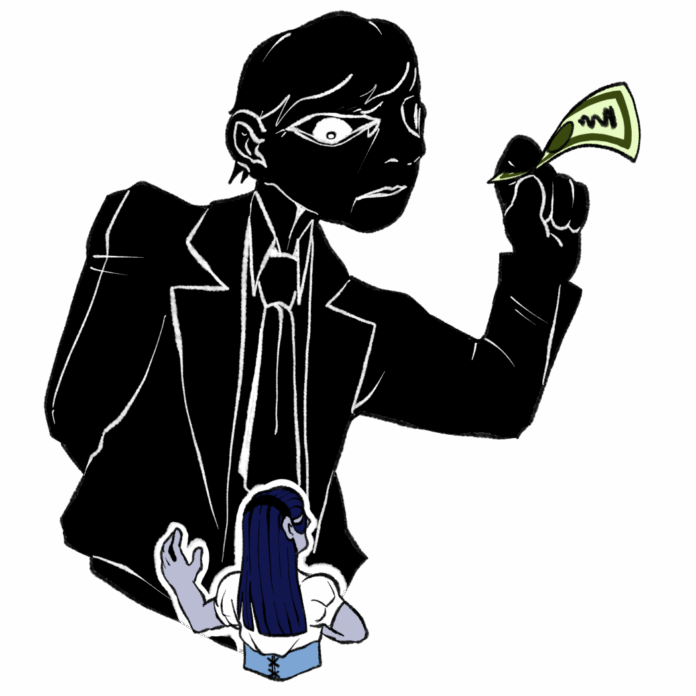We would like to believe that gender equality has gotten better in
recent years. Everyone has the same opportunities, is treated fairly, and bias doesn’t exist anymore. However, this statement disregards the effects of gender hierarchy and the
biases that still exist in our society.
Gender hierarchy refers to the structured way in which gendered roles and expectations create a system of inequality, with one gender typically having more privilege than the other. Looking up and down this tower of power dynamics, in this world where opportunities are decreasing by the second, one will notice the majority of opportunities
offered to straight white men.
Why do people lean towards this majority? A prime reason is that our workforce wants experience. When a natural bias exists against women, it’s easier for men to have better-looking resumes. The stereotypical image of the “perfect household” is that women stay home to take care of the kids while men provide an income. Expectations for more women to stay home than men can create a large gap in a resume. Even a small gap, like the five years it takes from when a child is born until they enter kindergarten, is detrimental to job opportunities, especially for stay-at-home moms.
Our society is built on acceptance; entertainment, art, and education are all built on acceptance. Simply getting into college, for example, is built with competition among everyone hoping to get a degree. With a bias rooted throughout society, it has been noticed that although fewer male students apply to college than female students, it is easier for men to be accepted.
At Brandeis University, admissions officers wanted to balance out the number of men and women on campus; with the trend of more female applicants compared to male applicants increasing upwards, their data suggests it’s been easier for men to get in and harder for women.
Brandeis admission officers claim that “given a male student and a female student with a similar profile… the university would potentially admit the male student and wait-list the female student because of wanting to get closer to this gender parity in terms of percentages in the class” (West). A situation like this builds fear within young women
dreaming of excelling at things they never thought possible; confidence decreases, self-demeaning statements increase, and belief in general dies out. As the strength of gender hierarchy increases, people become tied to stereotypes, and it can be hard to let them go. Take our names, for example. A name can be viewed as something that represents our identities and the small characteristics of who we are. However, our society even makes unfair assumptions based on how a name sounds.
Joann Rowling (also known as J.K. Rowling), the notorious author of the Harry Potter series, is a prime example. When submitting The Sorcerer’s Stone, Rowling claimed she decided to publish under the pen name J. K. instead of her first name because it sounded very feminine; she thought she’d be more likely to be published under a gender-neutral pen name.
Though Harry Potter is one of the most popular children’s series of all time, simply dividing young men and young women and placing biases and stereotypes on each side asks individuals to conform. Rowling is a successful female author, but she had to become so in a world where her first name could have held her back. We still live in a society that continues to support those social structures.
The chance for gender hierarchy to disappear lies within the opinions of each generation, but young people may be moving backward. The latest Harvard youth poll reveals that more men between the ages of 18 and 24 are leaning toward the conservative side than men ages 25 and 29, who are leaning more liberal. The conservative side endorses gender hierarchy, while the liberal side stands against it.
Why is this important? It relates to what people hear while they’re growing up or the environment they are surrounded by. Whether the noise comes from family, a friend, or just a group of people nearby, we’re prone to take in outside opinions. Think of an entire college campus now. When a student walking around campus hears more people favor one opinion over another, even if they have a contrasting opinion, they may change their bias. This can change through influences supporting a change in the current gender hierarchy.
Simply creating a new environment offers a subtle difference by just expressing a need for change in gender hierarchy. But so long as opinions endorsing this system continue to swim through people’s thoughts, there will always be an obstacle to moving past it, improving confidence, and rebuilding gender individuality.
For information about Diversity, Justice, and Sustainability practices at PLU, you can visit PLU website for Center for DJS or visit them in person on the ground floor of AUC.



















